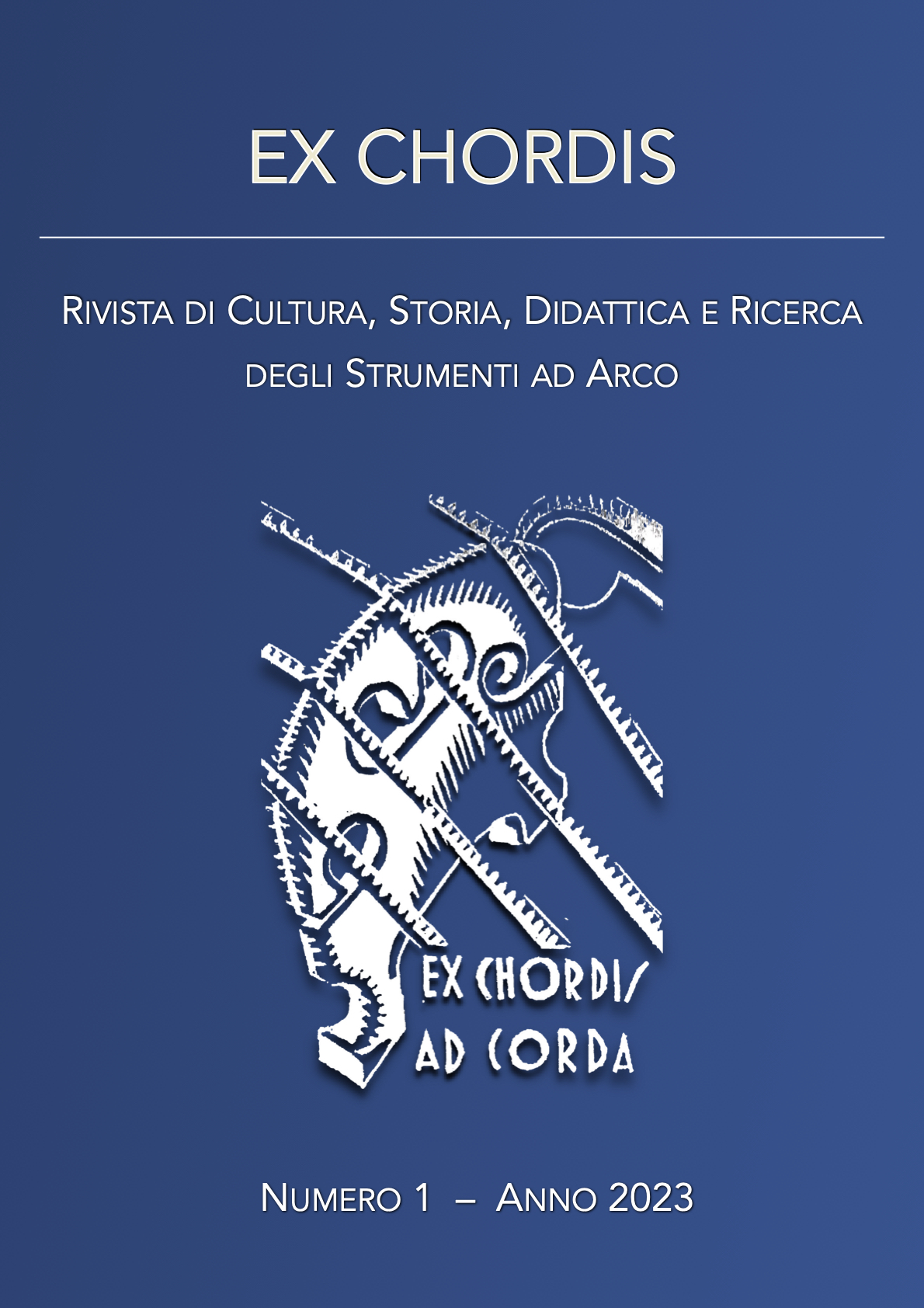Abstract
This paper is a concise and updated version of my Bachelor’s Thesis, which explores Arvo Pärt’s primary violin compositions. After completing my Bachelor’s degree, my deep interest in the Estonian composer led me to attend the Arvo Pärt Days at the Arvo Pärt Centre in Laulasmaa, Estonia in 2022. Inspired by this immersive experience, I decided to revisit and expand upon my previous analysis of two specific violin pieces by Pärt: Tabula Rasa (1977) and Fratres (1980). I aim to increase the knowledge about Arvo Pärt without all the stereotypes linked to his music. Therefore, the study combines specificity and generality, offering insights that transcend the ordinary perceptions associated with Pärt’s music. Starting with an analysis of Pärt’s technique, I establish a foundation for understanding key concepts that will emerge in the subsequent analysis of Tabula Rasa and Fratres. As we explore these pieces, a thematic thread emerges, focusing on the violin’s role and its intricate interactions with different instruments. Arvo Pärt’s music is different from everything else: I hope to explain the deep reasons behind my passion for his work.
References
Kris Ho Ang-Cheng, Calm or Tension? The Musical Demands in Strung Out (1967) and Spiegel im Spiegel (1978), «International Journal of Social Science and Humanity», VI, 7, 2016.
Felipe Pinto D’Aguiar, Tintinnabulation under the microscope, 2013, unpublished paper, https://www.academia.edu/5814272/Arvo_P%C3%A4rt_Musical_Analysis_
Andrea Frova, Fisica nella musica, Zanichelli, Bologna 1999.
Donald E. Hall, Musical Acoustics, Brooks/Cole Pub Co, Salt Lake City 2001.
Paul HILLIER, Arvo Pärt, Oxford University Press, Oxford 1997.
Bill McGLAUGHLIN, Arvo Pärt and the New Semplicity, 1998, https://saintpaulsunday.publicradio.org/features/9810_part/index.htm
Enzo Restagno, Arvo Pärt allo specchio, Il Saggiatore, Milano 2004.
Philip Rice, In ‘spirit’ and in truth: Rhytm and Time in the Music of Arvo Pärt as related to Medieval Poliphony and Philosophy, 2010.
Anna Shvets, Mathematical Bases of the Form Construction in Arvo Pärt’s Music, «Lithuanian Musicology», XV, 2014, pp. 88-101.
Andrew Shenton, The Cambridge Companion to Arvo Pärt, Cambridge University Press, Cambridge 2012.
Geoff Smith, An interview with Arvo Pärt: Sources of invention, «The Musical Times», CXL, 1868, Autumn 1999, pp. 19-22+24-25.
Luis Antonio López Villaseñor, Fratres de Arvo Pärt: el espìritu y la dualidad en el estilo tintinnabuli, Universidad Nacional Autonoma de México, 2017.
Edward V. Williams, The Bells of Russia, Princeton University Press, Princeton 1985.
Hoi Sze Susanna Wong, Timbre and Tintinnabulation in the Music of Arvo Pärt, Hong Kong, M.Phil. thesis, Chinese University of Hong Kong 2001.
Payne Zachary, Arvo Pärt and Fratres, The use of his compositional Tintinnabuli Style, University of Mary Washington 2015.
Rade Zivanovic Arvo Pärt’s Fratres and his Tintinnabuli technique, University of Agder 2012.

This work is licensed under a Creative Commons Attribution-ShareAlike 4.0 International License.
Copyright (c) 2023 Silvia Zeverino

